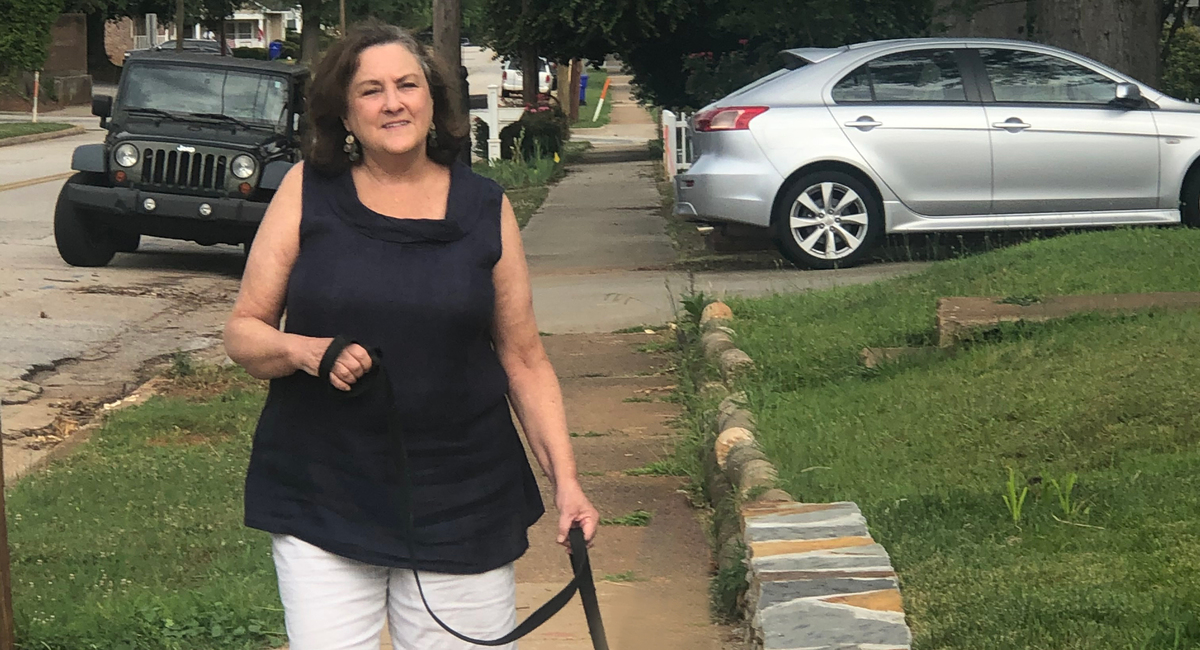apply for the winter 2026 citizens planning academy!
The Citizens Planning Academy is returning early in the new year with a new schedule. Learn more and apply today!

How a walkable neighborhood changed my life
The first day of winter, the Barrett family — my husband Richard, our chocolate Labrador puppy Bea, and myself — moved into a new home on the edge of downtown Greenville. Our new home lies within the Pendleton Street corridor, a seam in the urban fabric that knits together Greenville’s historic West End and Sterling neighborhoods.
After seventeen years in Greenville County, we chose to move to a walkable* neighborhood close to downtown. And, to quote Robert Frost’s poem “The Road Not Taken,” that has made all the difference.
For the first time in my adult life, I can walk out my front door and walk or bicycle to something! Without setting foot in a car, I can and do walk or bicycle to a wide variety of places — destinations that required me to drive or ride in a car to reach prior to our move.
In February, on a gloomy, overcast Saturday nonetheless, I took great pleasure and satisfaction in a leisurely, but purposeful, stroll to vote in the South Carolina primary elections at the West End Community Center. And yes, it is small things like this that I actually look forward to now because I can walk there so easily!
Within a few weeks of casting my votes in the primary, COVID-19 closed down many destinations in the West End, the heart of downtown, the Village of West Greenville, and even the Prisma Health Swamp Rabbit Trail within Greenville City limits. Sticking closer to home, Richard and I planned regular escapes from our makeshift, work-at-home offices to explore the residential streets of our neighborhood with Bea.
Since then, we’ve come to anticipate a certain rhythm along our daily walks. The rhythm of the blocks, their varying lengths and frontages, the range of home types — single family, duplex, cottage and townhomes — and how they engage passers-by like us. This rhythm is part of what propels us along our route now. Neighborhood homes are on relatively narrow lots, set fairly close to the sidewalk, with a front stoop, porch, or terrace — people coming and going, taking the trash to the curb, tending their garden or lawn, relaxing on their porch swing, or out walking their dog. Inevitably, there is interaction of the human and pet variety, even in the age of social distancing. Repeated encounters become acquaintances and casual friendships-in-the-making. The diversity of humanity — by any measure, including age, race, or income — that we encounter on daily walks is a valued characteristic of our new neighborhood.
One afternoon, we made an impromptu decision to disrupt our rhythm. On a whim, we changed up our usual route and donned our masks to visit the neighborhood variety store in search of a rare and coveted find in the era of Covid-19 – paper towels! We were elated walking home with our twin pack in tow. Another example of our newfound, simpler and more spontaneous lifestyle.
The right mix of amenities, destinations, activities, and opportunities, clustered together in a compact design, are essential aspects of the walkable neighborhood my family chose to live in. Streets designed to make walking practical, safe, and convenient for all are essential.
Our choice to move to a walkable neighborhood has helped me embrace a lifestyle I have aspired to adopt for a very long time. I am less car-dependent and more physically active in these new surroundings. I am a part of a community larger than myself, rich with lifelong residents and fellow newcomers of every age and background. As active babyboomers looking toward the future, we chose our home and its location in a walkable neighborhood as part of a long-term strategy to age in place. So here we are — and hopefully will be for years to come — gracefully aging in place. Our walkable neighborhood has made all the difference.
*By definition, a walkable neighborhood is within walking distance (approximately ¼ mile) of a variety of amenities — restaurants, retail shops, entertainment and/or recreational amenities — clustered together in a compact design and nested within a network of streets designed to make walking practical, safe, and convenient.
Sherry Barrett is the Land Policy Manager at Upstate Forever and can be reached at sbarrett@upstateforever.org.
